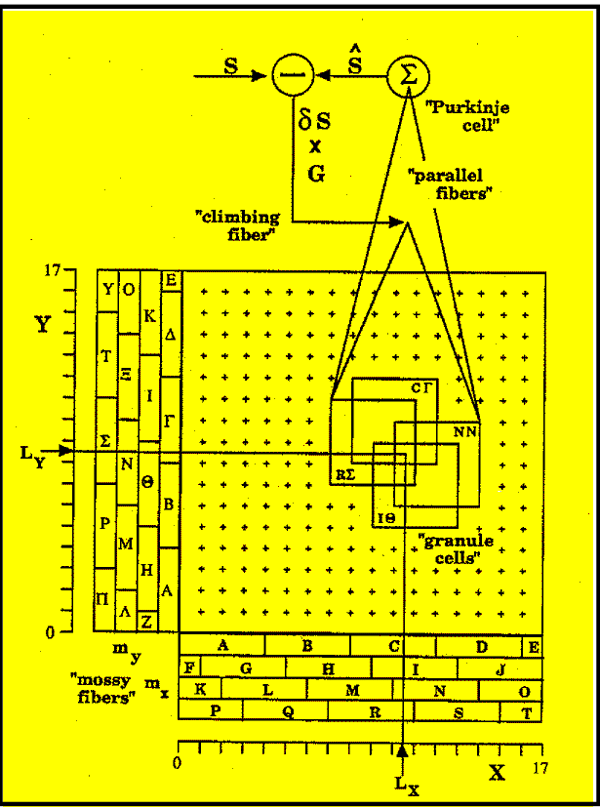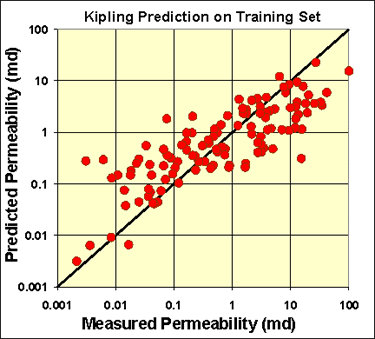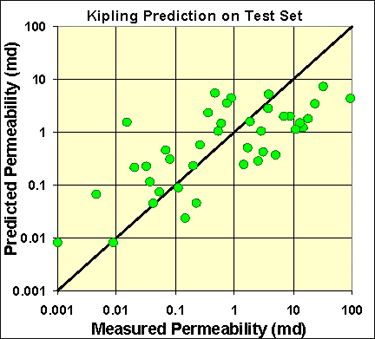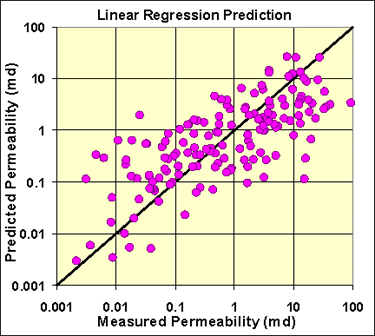 |
Oomoldic Reservoirs of Central Kansas, Controls on Porosity, Permeability, Capillary Pressure and Architecture |
Kansas Geological Survey Open-file Report 2002-48 |
Multivariate Linear Regression
Multivariate linear regression was performed to try and improve permeability prediction. Problems arise in performing LRA using the variables measured because some are correlated with each other creating collinearity problems. This is particularly true for porosity. Factor analysis to separate the relative influences does not significantly improve the overall predictive accuracy.
Basic porosity equation:
log k = 0.112 f - 2.48 Std. Error = 7X
With Connectivity Index:
log k = 0.090 f + 0.47 Connectivity Index - 3.21 Std. Error = 5.5X
Addition of any additional variables only improves the standard error of prediction from 5.5X to 5.4X because variance accounted for by porosity is attributed to the actual variable controlling the variance, for example:
log k = 0.083 f - 0.40 Connectivity Index - 0.28 Size + 0.11 Archie Index + 0.25 Fracture Index - 2.82 Std. Error = 5.4X

Kipling.xla - Nonparametric Regression
Multivariate linear regression was faced with colinearity issues. In addition, examination of outlier permeabilities indicated that unique traits might account for the measured permeability. For example, tight matirx might significantly lower permeability in a rock that might otherwise have excellent properties. If the population of tight matrix samples is too limited, regression has difficulty handling the variable influence. To see in nonparametric methods might improve prediction an Excel add-in program KIPLING (Bohling and Doveton, 1999 - available from the KGS) was used. KIPLING is an Excel program that is similar to neural network and works by discretizing variable space.
Utilizing 60% of the samples as a training set, KIPLING was able to exhibit a predictive accuracy of a factor of 4.4X on the training set and 5.4X in a test on the remaining data. This is comparable to the MLRA method accuracy. Further analysis is underway to analyze the nature of the analysis and possible directions of improvement.
 |
 |
 |
|
|
|
e-mail : webadmin@kgs.ku.edu
Last updated March 2004
http://www.kgs.ku.edu/PRS/Poster/2002/2002-48/P3-04.html